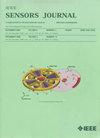Suppressing Interrupted Sampling Repeater Jamming by Transceiver Design of Fully Polarimetric Wideband Radars
IF 4.3
2区 综合性期刊
Q1 ENGINEERING, ELECTRICAL & ELECTRONIC
引用次数: 0
Abstract
The interrupted sampling repeater jamming (ISRJ) is adept at generating multiple false targets with high fidelity at radar receivers through subsampling, leading to significant challenges in detecting actual targets. This article presents a novel approach to mitigate such jamming by jointly designing the transmit waveform and receive filter of a fully polarimetric wideband radar system. In this study, we aim to minimize the sum of the target’s integral sidelobe (ISL) energy and the jamming’s total energy at the filter output. To ensure effective control over the mainlobe energy levels, we impose equality constraints on the peak values of both the target and jamming signals. Additionally, a constant-module constraint is applied to the transmit signal to prevent distortion at the transmitter. We incorporate the modulation of the target impulse response matrix (TIRM) to align with wideband illumination scenarios, utilizing the average TIRM over a specific target aspect angle (TAA) interval to mitigate sensitivity in the signal-to-interference plus noise ratio (SINR) related to TAA variations. To address this nonconvex optimization problem, we propose an efficient algorithm based on an alternating optimization framework. Within this framework, the alternating direction method of multipliers (ADMM) is employed to tackle the inner subproblems, yielding closed-form solutions at each iteration. The experimental results demonstrate the effectiveness of the proposed algorithm, highlighting the benefits of wideband radar illumination, the resilience of output SINR to TAA uncertainty, and the enhanced jamming suppression capabilities of the fully polarimetric system.全极化宽带雷达收发器设计抑制中断采样中继器干扰
间断采样中继器干扰(ISRJ)善于通过子采样在雷达接收器上高保真地生成多个假目标,从而给探测实际目标带来巨大挑战。本文介绍了一种通过联合设计全偏振宽带雷达系统的发射波形和接收滤波器来缓解这种干扰的新方法。在这项研究中,我们的目标是使滤波器输出端的目标积分侧叶 (ISL) 能量与干扰总能量之和最小。为确保有效控制主边波能量水平,我们对目标信号和干扰信号的峰值施加了相等约束。此外,我们还对发射信号施加了恒定模块约束,以防止发射器失真。我们加入了目标脉冲响应矩阵 (TIRM) 的调制,以适应宽带照明场景,利用特定目标纵横角 (TAA) 间隔内的平均 TIRM 来降低与 TAA 变化相关的信号干扰加噪声比 (SINR) 灵敏度。为解决这一非凸优化问题,我们提出了一种基于交替优化框架的高效算法。在此框架内,我们采用交替乘法(ADMM)来解决内部子问题,每次迭代都能得到闭式解。实验结果证明了所提算法的有效性,突出了宽带雷达照明的优势、输出 SINR 对 TAA 不确定性的恢复能力以及全偏振系统增强的干扰抑制能力。
本文章由计算机程序翻译,如有差异,请以英文原文为准。
求助全文
约1分钟内获得全文
求助全文
来源期刊

IEEE Sensors Journal
工程技术-工程:电子与电气
CiteScore
7.70
自引率
14.00%
发文量
2058
审稿时长
5.2 months
期刊介绍:
The fields of interest of the IEEE Sensors Journal are the theory, design , fabrication, manufacturing and applications of devices for sensing and transducing physical, chemical and biological phenomena, with emphasis on the electronics and physics aspect of sensors and integrated sensors-actuators. IEEE Sensors Journal deals with the following:
-Sensor Phenomenology, Modelling, and Evaluation
-Sensor Materials, Processing, and Fabrication
-Chemical and Gas Sensors
-Microfluidics and Biosensors
-Optical Sensors
-Physical Sensors: Temperature, Mechanical, Magnetic, and others
-Acoustic and Ultrasonic Sensors
-Sensor Packaging
-Sensor Networks
-Sensor Applications
-Sensor Systems: Signals, Processing, and Interfaces
-Actuators and Sensor Power Systems
-Sensor Signal Processing for high precision and stability (amplification, filtering, linearization, modulation/demodulation) and under harsh conditions (EMC, radiation, humidity, temperature); energy consumption/harvesting
-Sensor Data Processing (soft computing with sensor data, e.g., pattern recognition, machine learning, evolutionary computation; sensor data fusion, processing of wave e.g., electromagnetic and acoustic; and non-wave, e.g., chemical, gravity, particle, thermal, radiative and non-radiative sensor data, detection, estimation and classification based on sensor data)
-Sensors in Industrial Practice
 求助内容:
求助内容: 应助结果提醒方式:
应助结果提醒方式:


